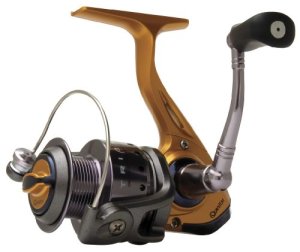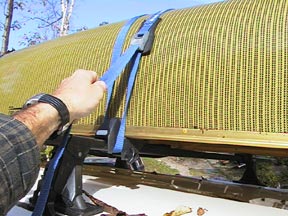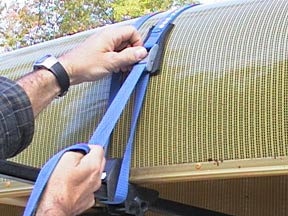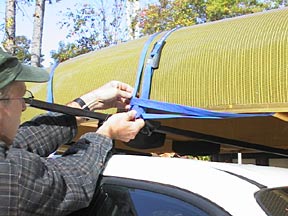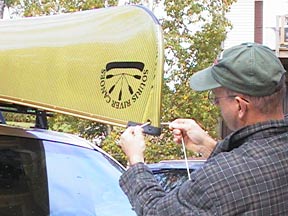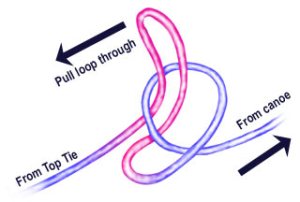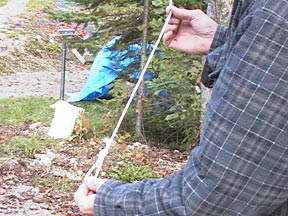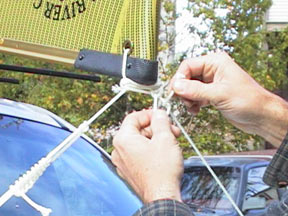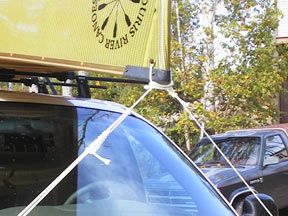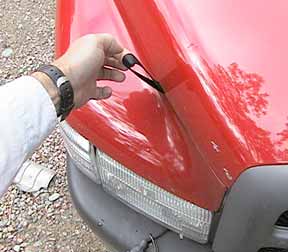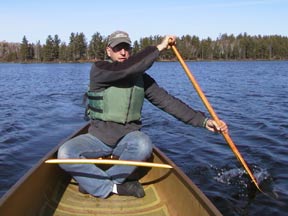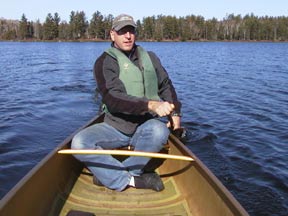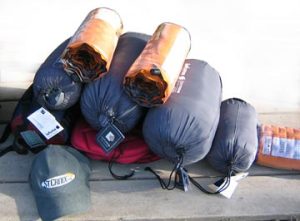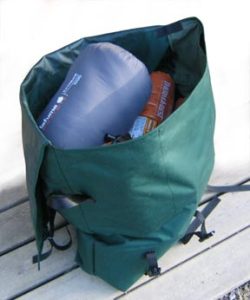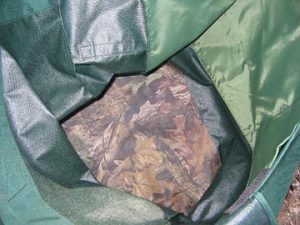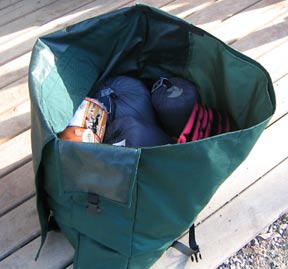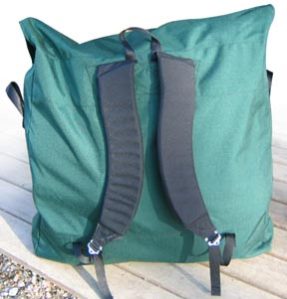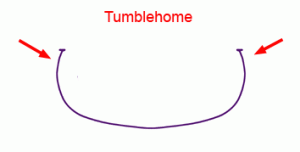One of the biggest hurdles in traveling with a car on the road or via canoe in the Boundary Waters (or anywhere for that matter) is bringing along a rod and reel. Conventional open water rod/reel combos are long, get caught in the brush, jammed in the back of the car, and can be challenging to transport without snapping the tip off turning a medium light 6 foot rod into a medium 5’6″ rod. I’ve successfully carried a lot of rods through the brush on portages for a lifetime without ever having one break. I didn’t say that I never came close to wiping my rod out on a branch but I’ve never broken one personally. That being said, I’ve had other people break my rods because they were clueless. It’s no surprise that I only let my dad carry my rod on a portage or I carry it myself. Those are the only two people allowed to handle my fishing rod when out in the brush.
Based on the fishing rod sales at Red Rock, a lot of people snap their rods off while carrying them in the woods around here. They do a whole bunch of other dumb stuff, but two ways to handle fishing rods will keep your rods going for a long time if you like remote places:
- More rod tips die unnecessarily by not understanding that “one ALWAYS carries a fishing rod on any trail in the brush, ‘rod-butt-first’”. I would venture that 95% of fisher-kind gets this ass-backwards every, single time. Carrying your rod tip forward in brush can, at times, end poorly.
- When passing through a screen door, DO NOT walk out “rod butt first”. If I had a nickle for every customer who walks out through the screen door at Red Rock with a BRAND, SPANKIN’-NEW, ROD, and pokes the rod butt to the outside world completely forgetting about the remaining 5 feet of rod behind them. Guess what? The screen door gets it every time. WHAP! SNAP! For this reason specifically, I built the screen door at Red Rock with no spring on it. A magnet holds it shut. You have to physically shut it. If you physically shut it on your brand new rod, there’s no hope for you.
Sure, you can tie your rod into your canoe, but depending on a number of variables, this is sometimes a time-eater and causer of neck pain. It is also no guarantee that the rod will survive your Labrador or your 13 year old, and you still have to wander around in the brush. You’re in the woods for Pete’s sake.
Introducing the Red Rock Brush Rod
Order this GREAT Spinning Combo Here!
At least, that’s what I’m calling it. I was at a buying show wondering why, in a sea of ice fishing rods, would Daiwa have this neat little ice fishing rod and not be teaming it up with a reel for a cool winter combo. I asked the snot-nosed sales rep that and the young lad looked at me like my “completely unheard of, totally unique, idea” for an “ice rod combo” was going down as a great revelation in fishing history. Never mind that when I arrived at the Daiwa space, he and the other children (first time at the show), were throwing casting weights to irritate the women across the aisle and cranking them back in with their Daiwa reels, ironically while looking at competitor booths selling every conceivable ice rod combo all around Daiwa.
Young lad aside, he couldn’t answer questions about this little rod other than it was a “dock rod” . Turns out, this is a pretty cool little rod for fishing out of a canoe as well. They say it can cast up to 20 yards which is 60 feet. For sneaking around with a canoe or even a boat, that is WAY enough for darn near any kind of Boundary Waters fishing. You can plug the shore for bass, drop over the side and jig for walleyes and lake trout, and throw some fairly heavy tackle for big northern pike.
I’ve often wondered why my ice fishing stuff which is comprised of everything being tiny (compared to my summer stuff) can work absolutely great in the middle of winter dragging a fish up through 2 foot deep hole in the ice. Why is that? My tiny little 27″ medium rod can pull 1 ounce airplane plugs 55 feet down and then pull up a 7 lb laker with a reel smaller than I would ever think to use in the summer. Ice fishing is THE most brutal use of fishing gear. If it’s not frozen, it’s freezing. Everything is colder. Water lands everywhere and freezes instantly. And, then after all those knots of ice get cranked up through the eyelet of that tiny rod and into that tiny reel, they all stick together and you are there trying to crack it off to unstick it just so you can do it again. Everything is more brittle and it gets used pretty hard whether you are catching fish or not. My ice gear gets used every bit as hard as my summer gear and maybe even moreso.
So, if we have a short rod, reel combo for summer fishing to do exactly the same thing as ice, who is to declare us wrong?
Tri Force Shorty
Ponder This
- Just think how easy it would be to tie a 36 inch fishing rod into a canoe under the seat with a couple of lighter weight bungees?
- How much easier would it be to walk on a portage with a 3 foot rod?
- Just think of how easy it would be to land your own fish with a landing net using a 36″ long rod instead of a 72″ rod.
- What do you think the odds are that your partner in the front of the canoe is going to knock your hat off with a sloppy back-flip of a rod while winding up for a cast with a 3 foot rod?
- What would it be like to jig heavy trout lures over the side when jigging in Kekekabic Lake for lakers in May/June?
The Daiwa Triforce Shorty is available in both spinning and casting versions. For those unfamiliar, casting versions have a “trigger” on the handle and would be the style you’d use for a baitcaster reel. You could also rig it up with a a spincast reel like a Daiwa Silver Cast or Gold Cast.
We’ve teamed it up with the Quantum Triax TRX10 Reel for great balance. This reel would take 100 yards of 6 lb. mono and probably 80 yards of 8 lb. mono. You could cheat and go to 15 lb. test braid which would fit 125 yards on this reel as it is 4 lb. test diameter. The Quantum Triax reel very nicely matches the Daiwa Triforce Shorty and comes with 7 ball bearings and anti reverse. It’s bail closes with just the right amount of force. I like an easy-closing, but not too easy, bail. The reel weigh in at 5.8 ounces.
Quantum Triax TRX10F
Order this GREAT Spinning Combo Here!
We’ll be offer the Triforce/Triax Brush combo at redrockstore.com once we get a bunch of parts and pieces in our website put together.
Perfect rod for canoe camping or crossing through rugged territory

